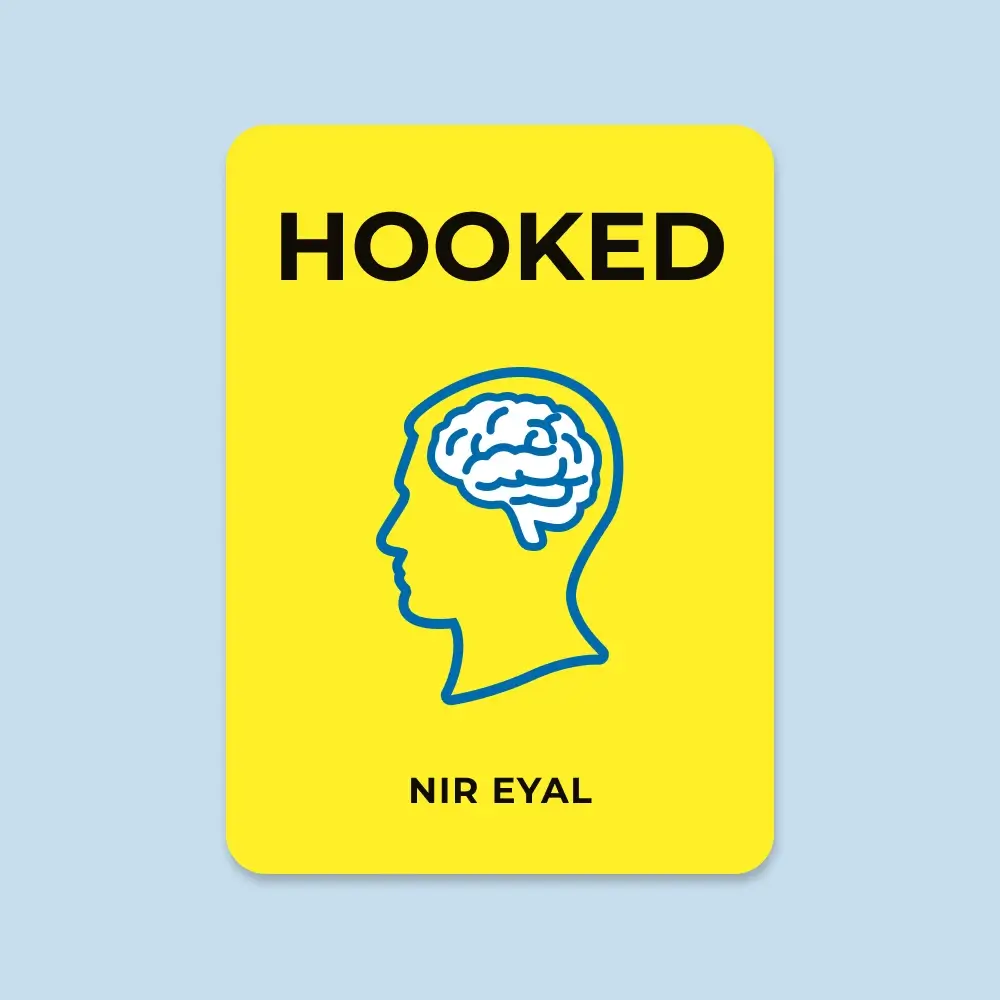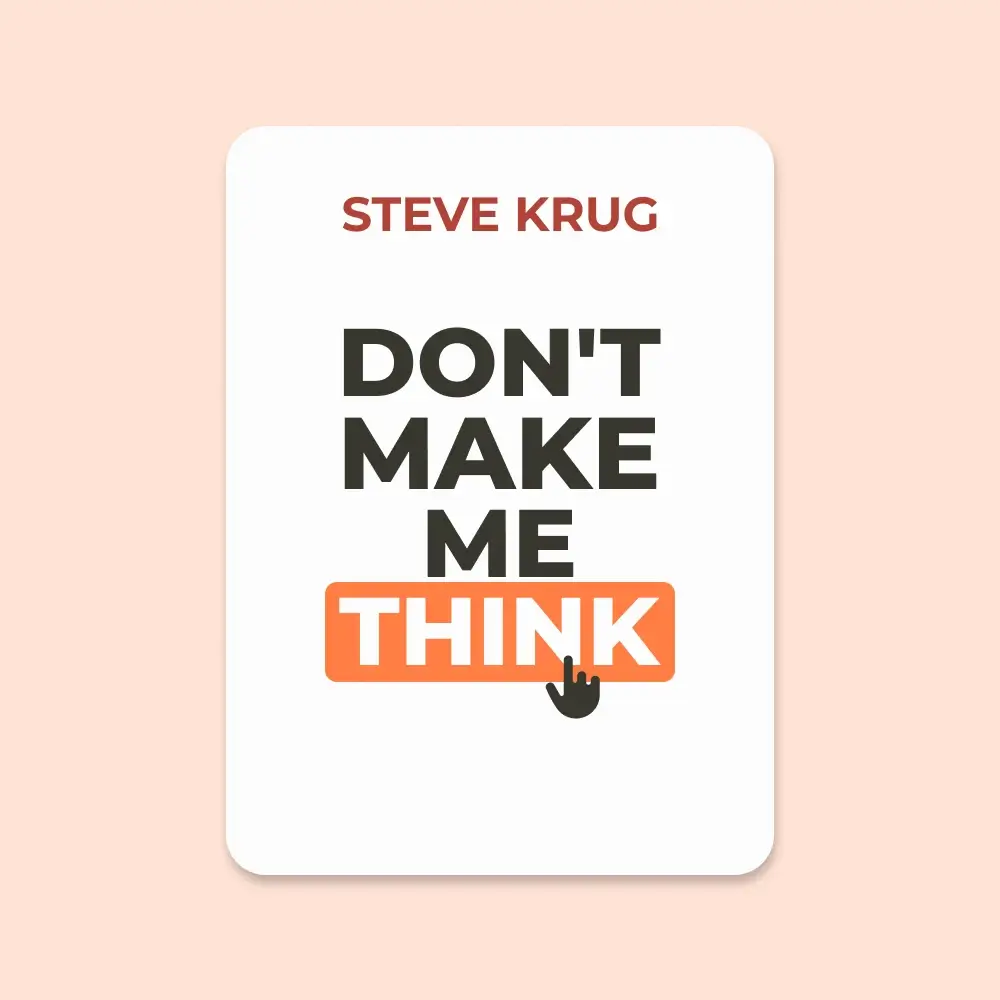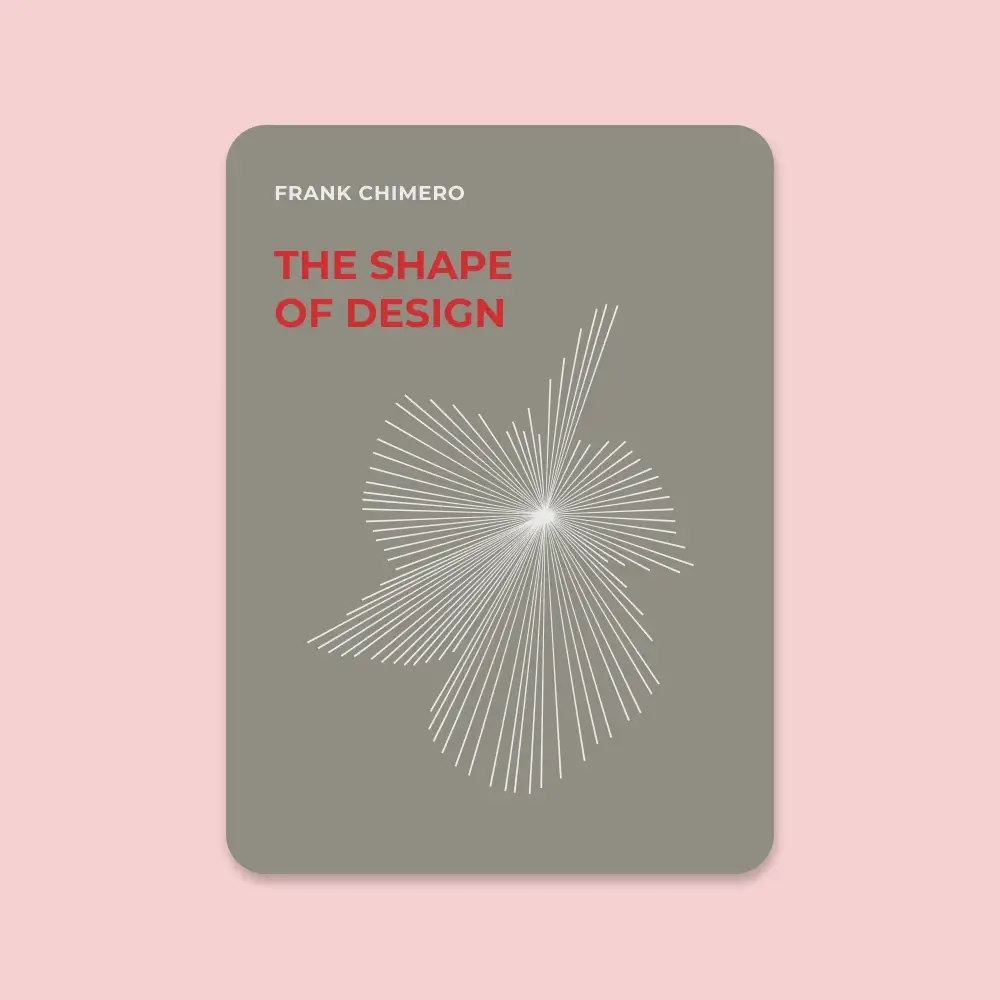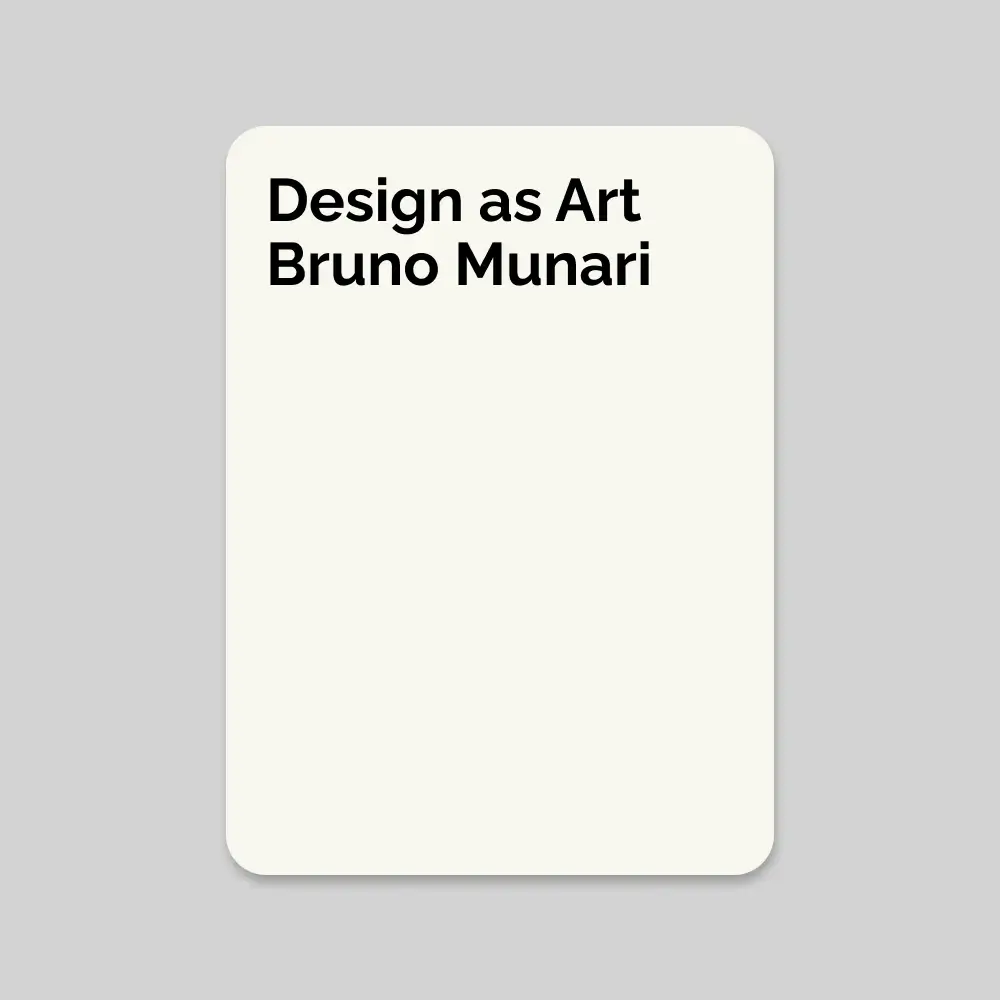
Hooked
🔁 Habits = Business Advantage − Products that create habits don’t need ads. Users return on autopilot, triggered by internal cues—not flashy marketing.
⚡ The Hook Model = 4 Steps to Habit − Trigger → Action → Variable Reward → Investment. Repeat the loop till it becomes second nature.
🧠 Trigger: Spark the Loop − External triggers (like notifications) start the habit. But the real power? Internal triggers—emotions like boredom or loneliness.
👆 Action: Simplicity Wins − Users act when motivation, ability, and a trigger intersect. Reduce friction. Make the next step stupidly easy.
🎁 Variable Rewards: Keep It Unpredictable − Dopamine spikes on uncertainty. Surprise users with rewards of the tribe (social), the hunt (resources), and the self (mastery).
📈 Investment: Make Them Care − The more effort users invest, the more they value the product. Effort = emotional ownership.
🧩 Internal Triggers: The Real Hook − Solve real pain—emotional discomfort, not just tasks. Bored? Scroll. Lonely? Chat. Trigger the itch, offer the scratch.
🧠 B = MAT (Fogg Behavior Model) − Behavior = Motivation + Ability + Trigger. Miss one? No action.
📉 Less Is More − Too many choices kill action. Fewer steps = higher usage. Simplify till it’s effortless.
📊 Test for Habit Strength − Plot frequency vs perceived utility. High on both? You’ve got a habit-former.
💣 Beware: Habit ≠ Addiction − Habits help. Addictions harm. Build responsibly. Manipulation without meaning is unethical.
👨🔬 Build for Meaning, Not Just Money − Facilitators (who use & believe in their product) build the best stuff. Dealers? Not so much.
📢 Hooked Users = Free Marketing − Happy users become evangelists. Sharing feels natural when usage is high and value is real.
🔄 Iteration Is Key − Habits aren’t built overnight. Observe users. Test loops. Refine the hook.
🔍 Look Inward to Design Outward − Your own behaviors hold clues. What habits do you have? Solve your own itch—others likely have it too.
💡 New Tech = New Habits − Every shift in interface (like touchscreens or wearables) opens the door for new behavior loops.
🧪 Habit Testing Framework −
- Identify habitual users
- Codify their behavior
- Modify your product to support it
-
Companies that form strong user habits enjoy several benefits to their bottom line. These companies attach their product to internal triggers. As a result, users show up without any external prompting. Instead of relying on expensive marketing, habit-forming companies link their services to the users’ daily routines and emotions.
-
A trigger is the actuator of behavior—the spark plug in the engine.
-
Following the trigger comes the action: the behavior done in anticipation of a reward.
-
Habit-forming technology is already here, and it is being used to mold our lives. The fact that we have greater access to the web through our various connected devices—smartphones and tablets, televisions, game consoles, and wearable technology—gives companies far greater ability to affect our behavior.
-
When harnessed correctly, technology can enhance lives through healthful behaviors that improve our relationships, make us smarter, and increase productivity.
-
Habits are defined as “behaviors done with little or no conscious thought.”
-
The convergence of access, data, and speed is making the world a more habit-forming place. Businesses that create customer habits gain a significant competitive advantage. The Hook Model describes an experience designed to connect the user’s problem to a solution frequently enough to form a habit. The Hook Model has four phases: trigger, action, variable reward, and investment.
-
The brain automatically deduces that if the decision was a good one yesterday, then it is a safe bet again today and the action becomes a routine.
-
If our programmed behaviors are so influential in guiding our everyday actions, surely harnessing the same power of habits can be a boon for industry. Indeed, for those able to shape them in an effective way, habits can be very good for the bottom line.
-
Once the compulsion to play is in place and the desire to progress in the game increases, converting users into paying customers is much easier. The real money lies in selling virtual items, extra lives, and special powers.
-
Users who continuously find value in a product are more likely to tell their friends about it. Frequent usage creates more opportunities to encourage people to invite their friends, broadcast content, and share through word of mouth. Hooked users become brand evangelists—megaphones for your company, bringing in new users at little or no cost.
-
A company can begin to determine its product’s habit-forming potential by plotting two factors: frequency (how often the behavior occurs) and perceived utility (how useful and rewarding the behavior is in the user’s mind over alternative solutions).
-
Habits are not the same things as addictions. The latter word means persistent, compulsive dependencies on a behavior or substance. Addictions, by definition, are self-destructive. Thus, it is irresponsible to make products that rely on creating and maintaining user addictions because doing so would mean intentionally harming people.
-
By progressing users through the four steps of the Hook Model—trigger, action, variable reward, and investment—hooks form habits.
-
For some businesses, forming habits is a critical component to success, but not every business requires habitual user engagement.
-
When successful, forming strong user habits can have several business benefits including: higher customer lifetime value (CLTV), greater pricing flexibility, supercharged growth, and a sharper competitive edge.
-
Habit-forming products often start as nice-to-haves (vitamins) but once the habit is formed, they become must-haves (painkillers).
-
Designing habit-forming products is a form of manipulation. Product builders would benefit from a bit of introspection before attempting to hook users to make sure they are building healthy habits, not unhealthy addictions
-
More choices require the user to evaluate multiple options. Too many choices or irrelevant options can cause hesitation, confusion, or worse—abandonment. Reducing the thinking required to take the next action increases the likelihood of the desired behavior occurring unconsciously.
-
Paying for reengagement is unsustainable for most business models, companies generally use paid triggers to acquire new users and then leverage other triggers to bring them back.
-
For earned triggers to drive ongoing user acquisition, companies must keep their products in the limelight—a difficult and unpredictable task.
-
Proper use of relationship triggers requires building an engaged user base that is enthusiastic about sharing the benefits of the product with others.
-
Yet external triggers are only the first step. The ultimate goal of all external triggers is to propel users into and through the Hook Model so that, after successive cycles, they do not need further prompting from external triggers. When users form habits, they are cued by a different kind of trigger: internal ones.
-
When a product becomes tightly coupled with a thought, an emotion, or a preexisting routine, it leverages an internal trigger. Unlike external triggers, which use sensory stimuli like a morning alarm clock or giant “Login Now” button, you can’t see, touch, or hear an internal trigger.
-
Emotions, particularly negative ones, are powerful internal triggers and greatly influence our daily routines. Feelings of boredom, loneliness, frustration, confusion, and indecisiveness often instigate a slight pain or irritation and prompt an almost instantaneous and often mindless action to quell the negative sensation.
-
Positive emotions can also serve as internal triggers, and may even be triggered themselves by a need to satisfy something that is bothering us. After all, we use products to find solutions to problems. The desire to be entertained can be thought of as the need to satiate boredom. A need to share good news can also be thought of as an attempt to find and maintain social connections.
-
Users who find a product that alleviates their pain will form strong, positive associations with the product over time. After continued use, bonds begin to form—like the layers of nacre in an oyster—between the product and the user whose need it satisfies.
-
Once we’re hooked, using these products does not always require an explicit call to action. Instead, they rely upon our automatic responses to feelings that precipitate the desired behavior. Products that attach to these internal triggers provide users with quick relief. Once a technology has created an association in users’ minds that the product is the solution of choice, they return on their own, no longer needing prompts from external triggers.
-
Products that successfully create habits soothe the user’s pain by laying claim to a particular feeling. To do so, product designers must know their user’s internal triggers—that is, the pain they seek to solve. Finding customers’ internal triggers requires learning more about people than what they can tell you in a survey, though. It requires digging deeper to understand how your users feel.
-
The ultimate goal of a habit-forming product is to solve the user’s pain by creating an association so that the user identifies the company’s product or service as the source of relief.
-
Looking for discrepancies exposes opportunities. Why do people really send text messages? Why do they take photos? What role does watching television or sports play in their lives? Ask yourself what pain these habits solve and what the user might be feeling right before one of these actions.
-
When it comes to figuring out why people use habit-forming products, internal triggers are the root cause, and “Why?” is a question that can help drill right to the core.
-
Triggers cue the user to take action and are the first step in the Hook Model. Triggers come in two types—external and internal. External triggers tell the user what to do next by placing information within the user’s environment. Internal triggers tell the user what to do next through associations stored in the user’s memory. Negative emotions frequently serve as internal triggers. To build a habit-forming product, makers need to understand which user emotions may be tied to internal triggers and know how to leverage external triggers to drive the user to action.
-
A habit is a behavior done with little or no conscious thought. The more effort—either physical or mental—required to perform the desired action, the less likely it is to occur.
-
There are three ingredients required to initiate any and all behaviors:
-
The user must have sufficient motivation.
-
The user must have the ability to complete the desired action.
-
A trigger must be present to activate the behavior.
-
-
The Fogg Behavior Model is represented in the formula B = MAT, which represents that a given behavior will occur when motivation, ability, and a trigger are present at the same time and in sufficient degrees. If any component of this formula is missing or inadequate, the user will not cross the “Action Line” and the behavior will not occur.
-
Understand the reason people use a product or service. Next, lay out the steps the customer must take to get the job done. Finally, once the series of tasks from intention to outcome is understood, simply start removing steps until you reach the simplest possible process. Consequently, any technology or product that significantly reduces the steps to complete a task will enjoy high adoption rates by the people it assists.
-
Take a human desire, preferably one that has been around for a really long time . . . Identify that desire and use modern technology to take out steps.
-
Critics first discounted Twitter’s 140-character message limitation as gimmicky and restrictive; little did they realize the constraint actually increased users’ ability to create. A few keyboard taps and users were sharing.
-
To successfully simplify a product, we must remove obstacles that stand in the user’s way.
-
The roadblocks confronting users vary by person and context. There is no “one size fits all” solution, so designers should seek to understand an array of possible user challenges.
-
The appearance of scarcity affected their perception of value.
-
The mind takes shortcuts informed by our surroundings to make quick and sometimes erroneous judgments.
-
Endowed progress effect, a phenomenon that increases motivation as people believe they are nearing a goal.
-
For any behavior to occur, a trigger must be present at the same time as the user has sufficient ability and motivation to take action. To increase the desired behavior, ensure a clear trigger is present; next, increase ability by making the action easier to do; finally, align with the right motivator. Every behavior is driven by one of three Core Motivators: seeking pleasure and avoiding pain; seeking hope and avoiding fear; seeking social acceptance while avoiding social rejection.
-
Ability is influenced by the six factors of time, money, physical effort, brain cycles, social deviance, and non-routineness. Ability is dependent on users and their context at that moment. Heuristics are cognitive shortcuts we take to make quick decisions. Product designers can utilize many of the hundreds of heuristics to increase the likelihood of their desired action.
-
What draws us to act is not the sensation we receive from the reward itself, but the need to alleviate the craving for that reward.
-
Our habits are simply the brain’s ability to quickly retrieve the appropriate behavioral response to a routine or process we have already learned. Habits help us conserve our attention for other things while we go about the tasks we perform with little or no conscious thought.
-
Variable rewards are not magic fairy dust that a product designer can sprinkle onto a product to make it instantly more attractive. Rewards must fit into the narrative of why the product is used and align with the user’s internal triggers and motivations.
-
Products utilizing infinite variability stand a better chance of holding on to users’ attention, while those with finite variability must constantly reinvent themselves just to keep pace.
-
E-mail, for example, utilizes all three variable reward types. What subconsciously compels us to check our e-mail? First, there is uncertainty concerning who might be sending us a message. We have a social obligation to respond to e-mails and a desire to be seen as agreeable (rewards of the tribe). We may also be curious about what information is in the e-mail: Perhaps something related to our career or business awaits us? Checking e-mail informs us of opportunities or threats to our material possessions and livelihood (rewards of the hunt). Lastly, e-mail is in itself a task—challenging us to sort, categorize, and act to eliminate unread messages. We are motivated by the uncertain nature of our fluctuating e-mail count and feel compelled to gain control of our in-box (rewards of the self).
-
Understanding what moves users to return to habit-forming products gives designers an opportunity to build products that align with their interests.
-
Variable reward is the third phase of the Hook Model, and there are three types of variable rewards: the tribe, the hunt, and the self. Rewards of the tribe is the search for social rewards fueled by connectedness with other people. Rewards of the hunt is the search for material resources and information. Rewards of the self is the search for intrinsic rewards of mastery, competence, and completion.
-
The more users invest time and effort into a product or service, the more they value it. In fact, there is ample evidence to suggest that our labor leads to love.
-
The more effort we put into something, the more likely we are to value it.
-
Once users have invested the effort to acquire a skill, they are less likely to switch to a competing product.
-
Unlike the action phase, which delivers immediate gratification, the investment phase concerns the anticipation of rewards in the future.
-
To help you, as a designer of habit-forming technology, assess the morality behind how you manipulate users, it is helpful to determine which of the four categories your work fits into. Are you a facilitator, peddler, entertainer, or dealer?
-
Facilitators use their own product and believe it can materially improve people’s lives. They have the highest chance of success because they most closely understand the needs of their users.
-
Peddlers believe their product can materially improve people’s lives but do not use it themselves. They must beware of the hubris and inauthenticity that comes from building solutions for people they do not understand firsthand.
-
Entertainers use their product but do not believe it can improve people’s lives. They can be successful, but without making the lives of others better in some way, the entertainer’s products often lack staying power.
-
Dealers neither use the product nor believe it can improve people’s lives. They have the lowest chance of finding long-term success and often find themselves in morally precarious positions.
-
The most highly regarded entrepreneurs are driven by meaning, a vision for greater good that drives them forward.
-
If you only build for fame or fortune, you will likely find neither. Build for meaning, though, and you can’t go wrong.
-
The Fogg Behavior Model notes that for an action to occur, users must receive a trigger and have sufficient motivation and ability to complete it. If any of these elements are missing or inadequate at the moment the trigger arises, the action will not occur.
-
The process of developing successful habit-forming technologies requires patience and persistence. The Hook Model can be a helpful tool for filtering out bad ideas with low habit potential as well as a framework for identifying room for improvement in existing products.
-
Building a habit-forming product is an iterative process and requires user-behavior analysis and continuous experimentation.
-
Tracking users by cohort and comparing their activity with that of habitual users should guide how products evolve and improve.
-
Studying your own needs can lead to remarkable discoveries and new ideas because the designer always has a direct line to at least one user: him-or herself.
-
As you go about your day, ask yourself why you do or do not do certain things and how those tasks could be made easier or more rewarding.
-
Observing your own behavior can inspire the next habit-forming product or inform a breakthrough improvement to an existing solution.
-
Wherever new technologies suddenly make a behavior easier, new possibilities are born.
-
Many companies have found success in driving new habit formation by identifying how changing user interactions can create new routines. Whenever a massive change occurs in the way people interact with technology, expect to find plenty of opportunities ripe for harvesting. Changes in interface suddenly make all sorts of behaviors easier. Subsequently, when the effort required to accomplish an action decreases, usage tends to explode.
-
The Hook Model helps the product designer generate an initial prototype for a habit-forming technology. It also helps uncover potential weaknesses in an existing product’s habit-forming potential. Once a product is built, Habit Testing helps uncover product devotees, discover which product elements (if any) are habit forming, and why those aspects of your product change user behavior. Habit Testing includes three steps: identify, codify, and modify.



